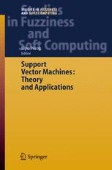Search
Search Results
-
Kernel Discriminant Learning with Application to Face Recognition
When applied to high-dimensional pattern classification tasks such as face recognition, traditional kernel discriminant analysis methods often suffer...
-
Multiple Model Estimation for Nonlinear Classification
This chapter describes a new method for nonlinear classification using a collection of several simple (linear) classifiers. The approach is based on...
-
Active Support Vector Learning with Statistical Queries
The article describes an active learning strategy to solve the large quadratic programming (QP) problem of support vector machine (SVM) design in...
-
Vibrations of X-Braced Multi-Story Frames
The study of vibrations for the x-braced portal frames in the last chapter is extended to high-rise x-braced multi-story frames in this chapter....
-
Intelligent Neurofuzzy Control of a Robotic Gripper
One of the major challenges of robotics is the gras** and manipulating of objects in an unstructured environment, in particular where the physical...
-
Sequential Pattern Mining*
Sequential pattern discovery has emerged as an important research topic in knowledge discovery and data mining with broad applications. Previous...
-
Uncertain Knowledge Association Through Information Gain
The problem of entity association is at the core of information mining techniques. In this work we propose an approach that links the similarity of...
-
Soft Computing Paradigms for Web Access Pattern Analysis
Web servers play a crucial role to convey knowledge and information to the end users. With the popularity of the WWW, discovering the hidden...
-
Ontology-based Fuzzy Decision Agent and Its Application to Meeting Scheduling Support System
A Fuzzy Decision Agent (FDA) based on personal ontology for Meeting Scheduling Support System (MSSS) is proposed in this chapter. In this system,...
-
D-GridMST: Clustering Large Distributed Spatial Databases
In this paper, we will propose a novel distributable clustering algorithm, called Distributed-GridMST (D–GridMST for short), which deals with large...
-
Data Mining of Missing Persons Data
This paper presents the results of analysis to evaluate the effectiveness of data mining techniques to predict the outcome for missing persons cases....
-
Current Status of Computerized Decision Support Systems in Mammography
Breast cancer is one of the most devastating and deadly diseases for women today. Despite advances in cancer treatment, early mammographic detection...
-
A Fuzzy Approach on Guiding Model for Interception Flight
This chapter presents an original moving control model based on the fuzzy logic, applied to some navigation special issues. The steps taken on...
-
Applications of Fuzzy Logic in Mobile Robots Control
Fuzzy logic is a mathematical tool that can manipulate human reasoning, concepts and linguistic terms. It suits ill-defined systems since it can...
-
Introduction
Genetic algorithms (GAs) are powerful search techniques based on principles of evolution. They are now widely applied to solve problems in many...
-
Linkage Learning Genetic Algorithm
In order to handle linkage evolution and to tackle the ordering problem, Harik [47] took Holland’s call [53] for the evolution of tight linkage quite...
-
Preliminaries: Assumptions and the Test Problem
After introducing the background and motivation of the linkage learning genetic algorithm, we will start to improve and understand the linkage...
-
Modeling of Fuzzy Data
Fuzzy data are imprecise data obtained from measurements, perception or by interviewing people. Typically, those data are expressed in linguistic...
-
Fuzzy Statistical Analysis and Estimation
In social science research, many decisions, evaluations, or purposes of evaluations are done by surveys or questionnaires to seek for people’s...
-
Clustering Via Decision Tree Construction
Clustering is an exploratory data analysis task. It aims to find the intrinsic structure of data by organizing data objects into similarity groups or...
